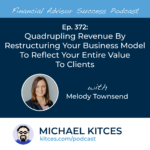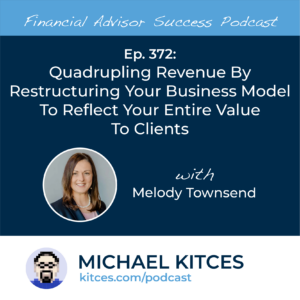In 2021, Congress passed the Corporate Transparency Act, which, for the first time, required small business entities such as LLCs and corporations to report identifying information on their "beneficial owners" (i.e., those who own at least 25% of, or who otherwise exercise substantial control over the business). The law's provisions became effective on January 1, 2024, and so many small businesses – including a good number of RIA firms – will be required to submit a Beneficial Ownership Information (BOI) report to the Treasury Department's Financial Crimes Enforcement Network (FinCEN).
With the deadline for pre-existing companies to file an initial report approaching on January 1, 2025 (and even sooner for newer companies formed during 2024), small business owners, including many RIA owners and their business-owning clients, will benefit from a deeper understanding of the new BOI reporting requirements, including which businesses are required to submit a report, which individuals associated with the company are considered "beneficial owners" for BOI reporting purposes, and what information will need to be gathered to submit with the report.
From an advisory firm perspective, the most important takeaway from the new BOI reporting requirements is that while SEC-registered RIAs are not required to submit a BOI report (since they're included on a list of entities specifically exempted from the rule), many state-registered RIAs are still subject to the BOI reporting requirements – except, notably, firms that are dually registered as insurance producers and/or broker-dealers, which are also included on the list of exemptions.
What's also important to note is that the BOI reporting rules apply to both "direct" and "indirect" beneficial owners, which include individuals who own a given company themselves and those who own the company via one or more intermediary entities. Additionally, companies formed on or after January 1, 2024, will need to include "company applicants", which are the individuals who filed and/or directed the filing of the company's business formation documents at the state level in their BOI reporting. And if any of the company's beneficial owners change (e.g., due to ownership interests changing hands or the death of an owner), the company will need to resubmit the report within 30 days.
Ultimately, while many companies with just one or a handful of owners will have relatively simple BOI requirements (for which the primary hurdle is simply remembering to submit an initial BOI report ahead of the January 1, 2025, deadline), some companies with more complex ownership and leadership structures might have more of a challenge in who exactly counts as a beneficial owner, which might require the help of outside legal counsel. Which means that given the penalty of up to $500 per day for failing to file (or incorrectly filing) a BOI report until the violation is corrected, it makes sense for state-registered advisory firm owners to get started now on the process of gathering information and filing to fulfill the new law's requirements!









